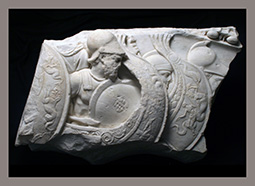download article as .pdf: Arredo urbano e rappresentatività pubblica e privata: il caso dell’Apulia meridionale in età tardo repubblicana e imperiale
The study investigates the Roman sculpture from Taranto, Lecce and Brindisi; although in many cases it is difficult to trace the pertaining original contexts, the preserved documentation allows us to analyze how the sculptural decoration was used to meet the needs of public and private representativeness. The ideal sculptures, realized in function of the great monumental complexes built starting from the Augustan age (celebratory complexes, theaters, thermae, amphitheaters), show the adhesion to the political and cultural guidelines enacted at central level, while the iconic statuary documents the choice of public areas or highly representative buildings, aimed at building consent, so as to create those “figurative spaces” through which the city celebrates itself and its citizens. Iconographic schemes and reference models attest the full adherence to the cultural models proposed by the imperial authority.

